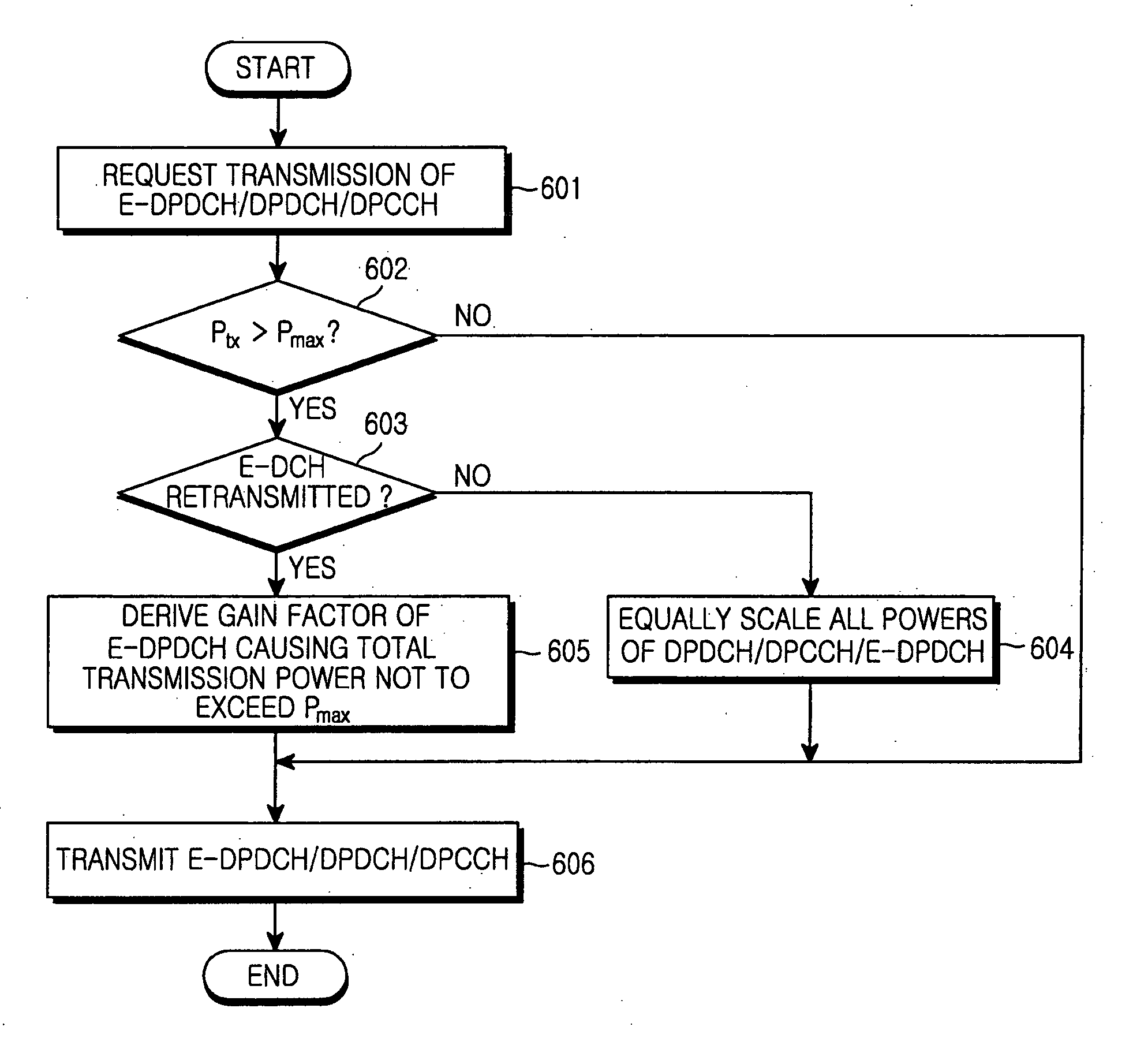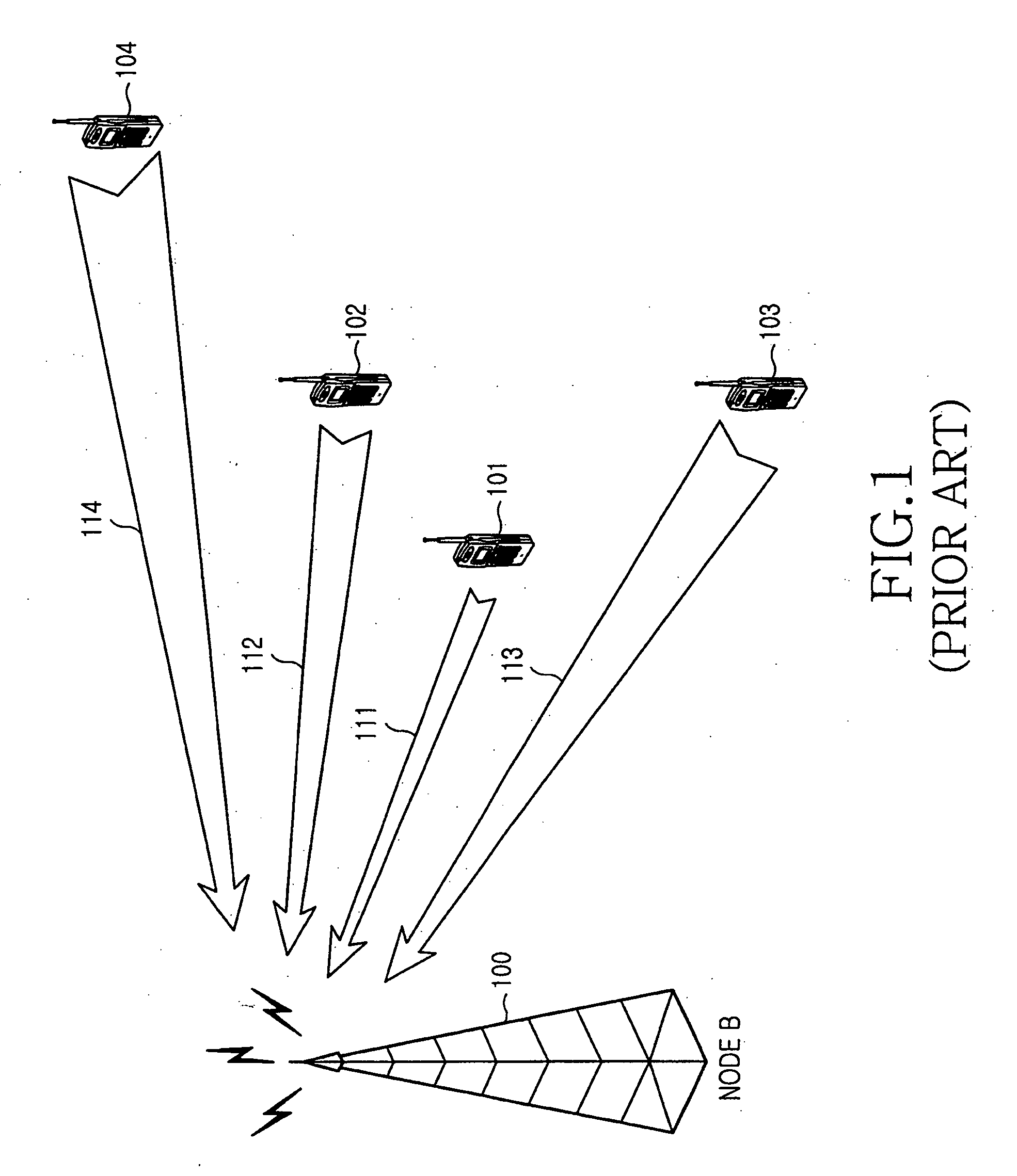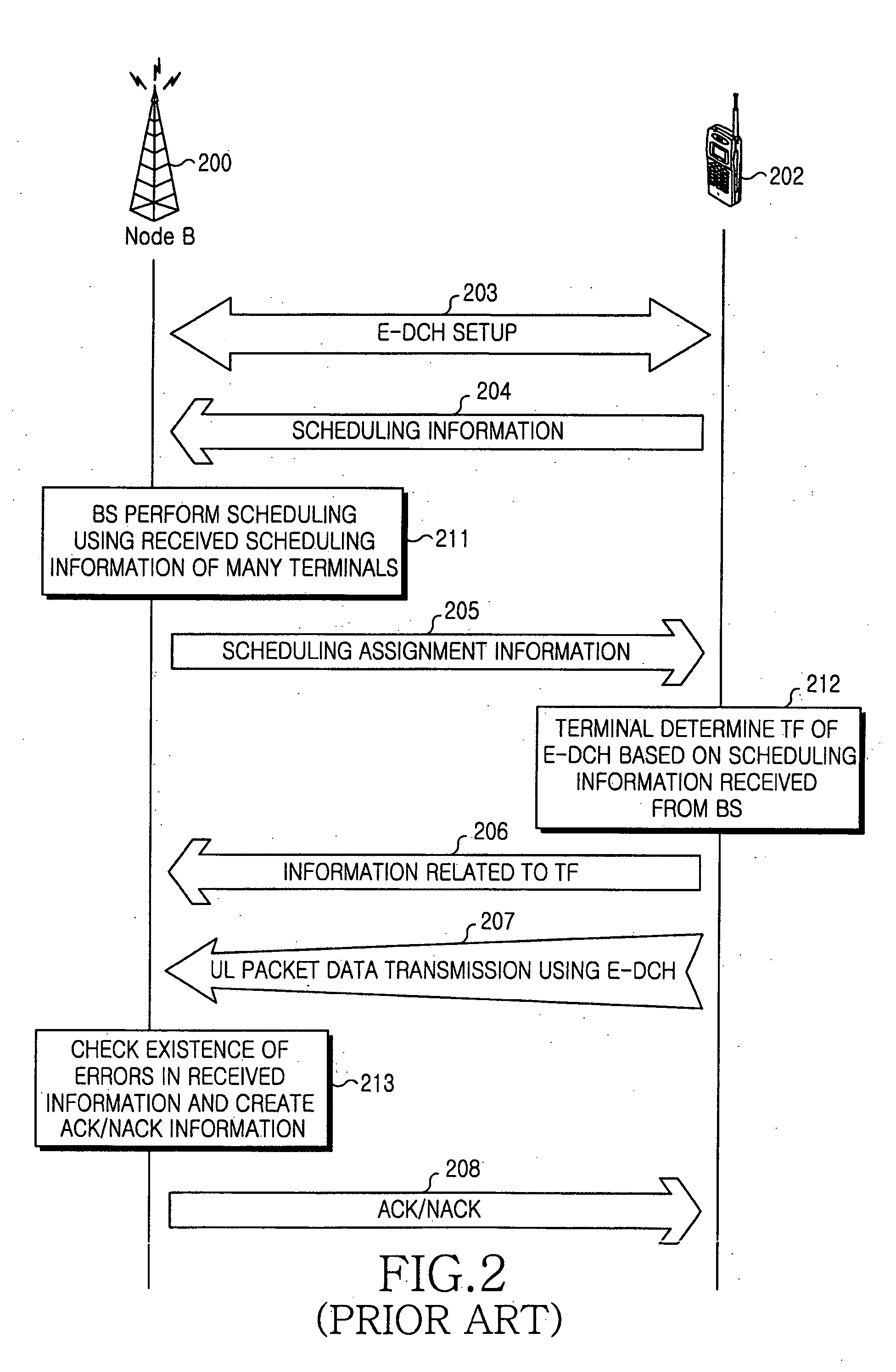Method and apparatus for data transmission in a mobile telecommunication system supporting enhanced uplink service
a mobile telecommunication system and data transmission technology, applied in the direction of transmission monitoring, power management, line-transmission details, etc., can solve the problems of dch or e-dch transmission quality deterioration due to retransmission, total transmit power exceeding the maximum allowed power, etc., to achieve efficient control of the transmit power of each physical channel
- Summary
- Abstract
- Description
- Claims
- Application Information
AI Technical Summary
Benefits of technology
Problems solved by technology
Method used
Image
Examples
example 1
[0056] In a first embodiment of the present invention, total transmit power is scaled by recalculating a gain factor of a specific channel, that is, an E-DPDCH such that the total transmit power does not exceed the maximum allowed power in an upper layer of a UE. According to this first embodiment of the present invention, when both E-DCH data and DCH data exist, the UE checks if the E-DCH data is retransmitted. If a result of the checking shows retransmission of the E-DCH data, a gain factor of the E-DPDCH to which the E-DCH is mapped is reset at the time of the transmission.
[0057]FIG. 7 illustrates procedures of setting transmit powers of physical layers of a UE in accordance with the first embodiment of the present invention.
[0058] Referring to FIG. 7, in step 601, a UE detects a transmission request of E-DPDCH / DPDCH / DPCCH data, including gain factors of the respective channels. In step 602, the UE having detected the transmission request estimates total transmit power Ptx usin...
example 2
[0082] In a second embodiment of the present invention, if total transmit power exceeds the maximum allowed power in a case where E-DCH data is retransmitted, the total transmit power is scaled by reducing a gain factor of the E-DCH by a predetermined gain offset.
[0083] According to this second embodiment of the present invention, a new gain factor of an E-DPDCH is calculated by the following equation (Equation (2)) when the total transmit power exceeds the maximum allowed power.
βe=βe,ori×10(Δoffset / 10)
wherein Δoffset denotes the gain offset which can be set through signaling of an upper layer.
[0084]FIG. 9 illustrates procedures of setting transmit powers of physical layers of a UE in accordance with the second embodiment of the present invention.
[0085] Referring to FIG. 9, in step 621, a UE detects a transmission request of E-DPDCH / DPDCH / DPCCH data, comprising gain factors of the respective channels. In step 622, the UE having detected the transmission request estimates total...
example 3
[0092] In a third embodiment of the present invention, a UE scales powers of the entire channels by selecting a gain factor of an E-DPDCH such that total transmit power does not exceed the maximum allowed power in consideration of retransmission. According to this third embodiment of the present invention, a gain factor is selected in a different manner from that of initial setting in TFC selection procedures when a DCH occurs at a point of time of retransmission differently from at initial transmission.
[0093] In particular, the UE checks transmit power on a slot unit basis for a plurality of channels to be transmitted and reduces the transmit power of a specific channel step by step according to priorities of the channels. The priority may be determined by whether the relevant channel is a channel, retransmission of which is ensured, a control channel or the like.
[0094] To facilitate understanding of this embodiment, an exemplary transmission environment will be described first. ...
PUM
 Login to View More
Login to View More Abstract
Description
Claims
Application Information
 Login to View More
Login to View More - R&D
- Intellectual Property
- Life Sciences
- Materials
- Tech Scout
- Unparalleled Data Quality
- Higher Quality Content
- 60% Fewer Hallucinations
Browse by: Latest US Patents, China's latest patents, Technical Efficacy Thesaurus, Application Domain, Technology Topic, Popular Technical Reports.
© 2025 PatSnap. All rights reserved.Legal|Privacy policy|Modern Slavery Act Transparency Statement|Sitemap|About US| Contact US: help@patsnap.com



